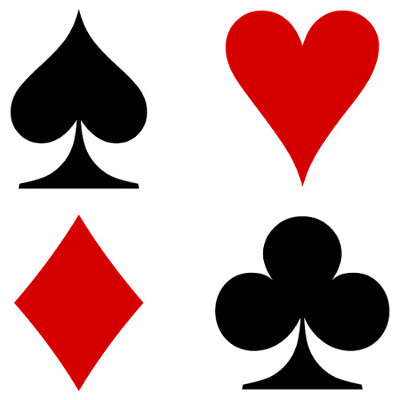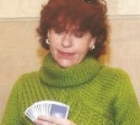
I came across a hand in a recent club tournament which gave me pause to consider just how sophisticated and aggressive modern bridge bidding has become. The publishing of Charles Goren’s Point-Count Bidding in 1949 heralded the start of scientific bidding. It gave starting-out players an easy-to- learn and disciplined basis for bidding and pushed even the great mass of experienced bridge players into abandoning Ely Culbertson's clumsy and inaccurate honor-trick method of hand valuation. As such, Goren’s publications are recognized as the most important influence on popularizing the game.
But while point count still remains a basic tenant, bidding methods have evolved which give greater significance to the shape and texture of hands. Few have contributed more than Marty Bergen and Mike Lawrence to the introduction of methods of hand valuation which allow us to reach contracts with fewer points than the more basic systems dictated. Bergen, in particular, with his publication Points Shmoints and his popularization of the Rules of 20 and 15 in To Bid or Not to Bid, set the cat amongst the pigeons, so to speak.
With that as a background, let’s return to the hand in question. I was dealer in the West seat, vulnerable against non-vulnerable opponents. I held: ♠ Q 10 4 3 © 10 4 3 ¨ A K Q 10 6 § 4. With only 11 points, the hand would not qualify as an opener in standard methods nor does it meet the old Culbertson criteria of possessing two and a half quick tricks. With the ♠K rather than the ♠Q, of course, it would have satisfied both. Instinctively, however, I had little hesitation in opening the bidding 1 Diamond. It had the look and feel of an opener. Indeed, the hand meets both the basic and more advanced criteria for opening under the Rule of 20. The 11 points together with the lengths of the two longest suits, Diamonds, 5, and Spades, 4, add up to the required 20 and, in addition, the hand satisfies Bergen’s caveats of the bulk of the points being in the two long suits and that it contains two quick tricks, in this case, the AK. Incidentally, although the Rule of 15 is normally used only for evaluating sub-twelve point hands for opening in fourth position, the hand also meets the requirements of that rule: The number of points plus the number of cards in the Spade suit should add up to at least 15.
The bidding continued with my left-hand opponent bidding 1 Heart, which I took to indicate 11 or more points and at least 5 cards in the Heart suit, though I wouldn’t have been surprised to find him with less points at favorable vulnerability. My partner now made a negative double showing 8 or more points, a 4- card Spade suit – with 5 he would have bid 1 Spade directly - and, normally, 4 or more Clubs. That is, a hand with interest in both the thus-far unbid suits. As an aside, the negative double, introduced in 1957 by Alvin Roth, is another post-Goren innovation which has become an essential weapon in today’s competitive bridge armory.
My right-hand opponent, North, now jumped to 4 Hearts – a Bergen style semi-preemptive bid showing 6 to 11 points and, normally, 5-card support for partner’s suit. Bids like this are based on the Law of Total Tricks which, briefly, states that as a rule of thumb in a competitive situation with both sides having between 17 and 23 points, each side playing in its established trump fit can make as many tricks as the number of trumps it has. So, if my assumptions were correct, North-South had 10 hearts between them and stood to make the Heart game. On the other hand, indications were that with only 8 spades between us, we couldn’t make more than 2 Spades but, knowing partner had at most 1 heart and I had a single club, I felt we wouldn’t be more than 1 off in 4 Spades. Even if doubled, we would still score better than allowing our opponents to make 4 Hearts, so I bid 4 Spades.
South passed and partner surprised me with a 5 Diamond bid. He obviously had cold feet about playing in Spades with only 8 trumps in what was clearly a highly distributional deal. North persisted with 5 Hearts, which I passed and partner closed the bidding with 5 Spades.
The full hand and bidding:
| North | ||
| ♠ 7 6 5 | ||
| © A 8 5 2 | ||
| West | ¨4 | East |
| ♠ K J 9 8 | § K Q 10 7 3 | ♠ Q 10 4 3 |
| © Q | ©10 4 3 | |
| ¨ J 9 8 7 5 | South | ¨ A K Q 10 6 |
| § A 8 5 | ♠ A 2 | § 4 |
| ©K J 9 7 6 | ||
| ¨ 3 2 | ||
| § J 9 6 2 |
|
South 1D |
West 1H |
North Dbl
|
East 4H
|
As it turned out, we scored badly on the hand. South led a heart to partner’s ©A. North switched to his singleton diamond and when South got in with the ♠A, he played a diamond for his partner to ruff. 5 Spades was down 1 for a score to North-South of 100. Interestingly, 5 Hearts also fails on a diamond lead to West’s ¨A, followed by a club to East’s §A, allowing the latter to give partner a club ruff. The only 5-level contract which is undefeatable is 5 Diamonds by East-West. Such is life.
Competitive auctions just ain’t what they used to be.
 Advertisers Directory 191
Advertisers Directory 191 Milestones 191
Milestones 191 Consumer Watch
Consumer Watch Bridge the right way
Bridge the right way A Bit of Humor on Food
A Bit of Humor on Food ESRA Photo enthusiasts meet monthly
ESRA Photo enthusiasts meet monthly Alan Caplan
Alan Caplan